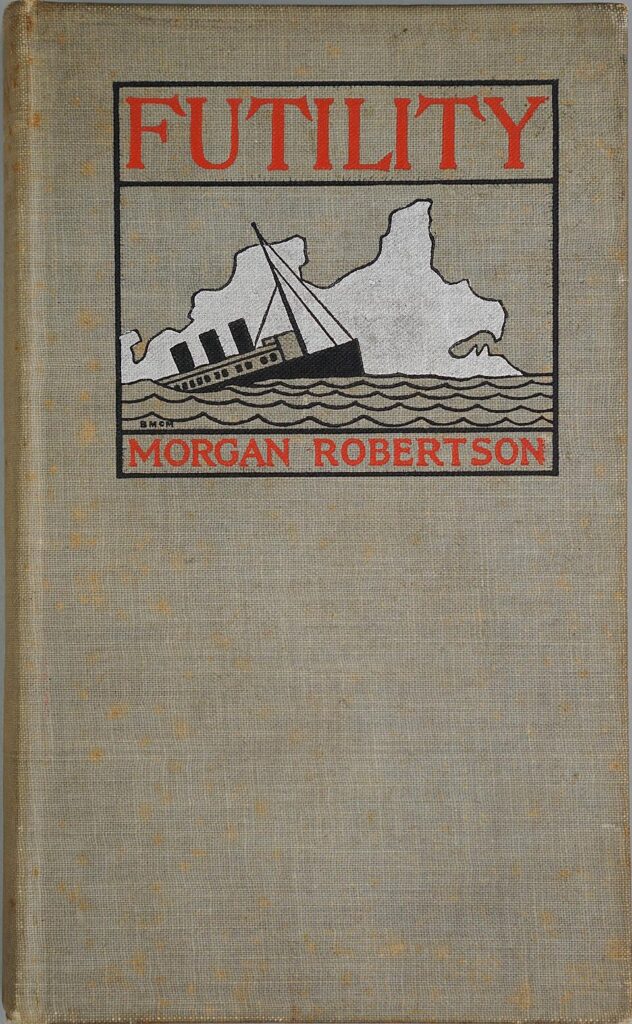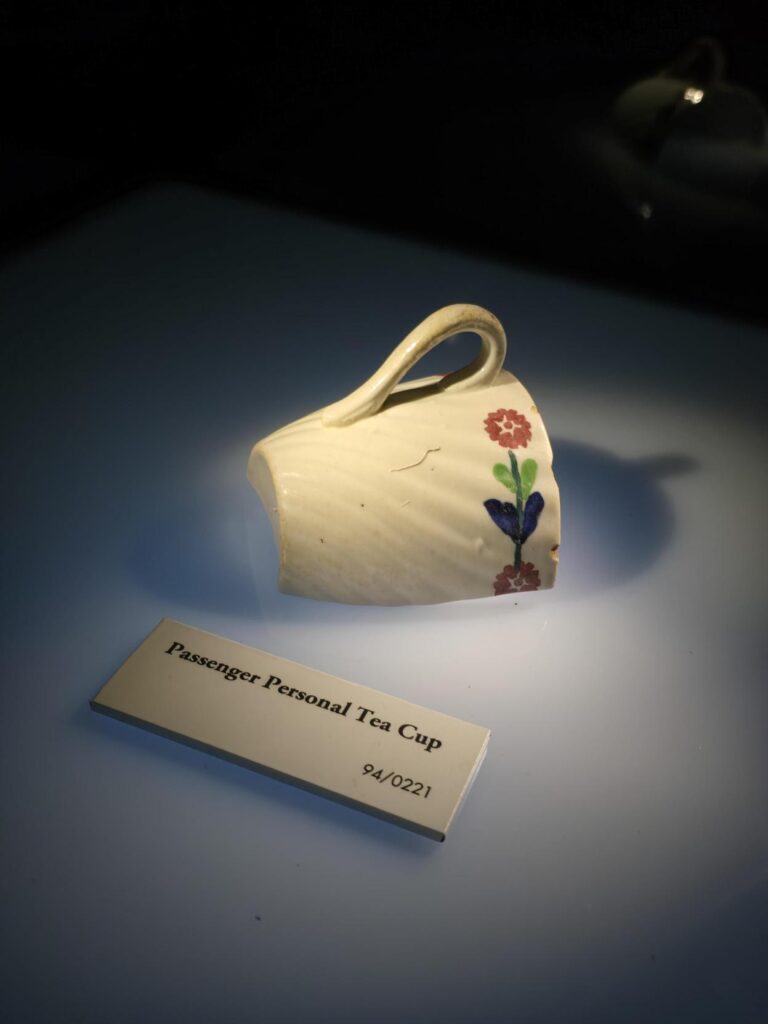Written by Ross Mumford I Reviewed by Heather Matlock & Avery Stone | Images added by Kaylee
Titanic is a topic often shrouded in myth. Ever since the moment she struck the iceberg and disappeared beneath the Atlantic waves, people have searched for explanations and ways to rationalize the circumstances and fill in the gaps where answers were missing. This is not a new phenomenon. The human desire to explain the unknown is timeless, and sometimes the myths created in that search take on lives of their own.
Whether it’s the story of a mummy in the cargo hold, a prophecy foretold, or an unlucky number, Titanic myths and superstitions continue to fascinate. We must also recognize that some premonitions shared by survivors or near-passengers may represent genuine lived experiences, stories that remain unexplainable even today. These tales, along with the myths, often serve as the hook that draws people into Titanic’s enduring story. But those who encounter them must resist the temptation to simply accept them as facts. From 1912 to today, we should meet our curiosity with investigation, seek the truth, challenge the unsubstantiated, accept uncertainty, and stay grounded in what we do know.
Where Did These Myths Come From?
When Titanic sank in 1912, so much information vanished with her. Logs, lists, testimonies, and lived experiences were lost, leaving a void the public felt compelled to fill. To meet the demand for facts, newspapers at the time, as well as individuals and even early authors, often wove together truth, rumor, speculation, and imagination. As Titanic historian George Behe put it: “So powerful is the emotional impact of the Titanic saga that many people wish to somehow become involved with it, to become a part of it.”
As Titanic’s story gained global attention, the spread of misinformation accelerated. Myths became embedded so deeply in her history that even new discoveries struggle to dislodge them. Her wreck remained undiscovered for 73 years—a long stretch of time that allowed unverified tales to settle in as “truth.” Though we’ve learned much since her discovery in 1985, debunking decades of entrenched beliefs is an ongoing challenge.
That’s not to say that all such myths arose out of malicious intent. Often, their creation is driven by a very human desire for comfort or meaning, an attempt to make sense of a tragedy that defies explanation.
We must also acknowledge the personal truths of survivors, victims, and near-passengers who experienced the unexplainable. Whether through dreams, thoughts, or feelings, many experienced premonitions of the tragedy. In a few cases, these stories can even be corroborated by witness testimony or historical evidence. Some responded by cancelling voyages, several ignored their premonitions, and others boarded Titanic with trepidation. Many of these stories were shared in the months, years, or even decades following the tragedy. To simply denounce them all would be a disservice to the Ship’s history and these individuals’ lived experiences. We must lead with the belief that some stories were shared in genuine good faith—and that there might be things in this world that we cannot explain. Open-mindedness and critical thinking are our best tools when investigating.
Fate, Superstition, and the Allure of the Unknown
The fascination with fate, omens, and powers beyond our understanding laid the groundwork for many of Titanic’s most enduring legends. These stories offer a kind of reassurance: that it was all somehow destined. People pointed to eerie signs—the delayed sailing date, the lack of a ship’s christening, ominous phrasing in passenger and crew letters, and a cat presumably on board. Survivors recalled prophetic warnings from strangers and soothsayers. Whether proven or not, these stories continue to capture global attention, especially when events seem too aligned to be mere coincidence.
Some explain the tragedy by pointing to Morgan Robertson’s 1898 novella Futility—written fourteen years before Titanic’s voyage—which featured an enormous ship called Titan that sank under eerily similar circumstances. Others trace it to the phrase “practically unsinkable,” which quickly lost its qualifier and became a whispered challenge to fate. Was this hubris inviting divine retribution? Many believed so.

What We’ve Lost and What Remains
There is still so much we will never know. Some survivors were too traumatized—or too burdened with guilt—to ever speak of that night, meaning they never shared their stories and experiences. When the ship’s last survivor, Millvina Dean, died in 2009, the world lost its final first-hand witness. Paper records that once traveled and remained with the Ship have long since disintegrated into the North Atlantic. What we have left are fragments: survivor accounts, newspaper records, occasional documents, and what we can still learn from the deteriorating wrecksite.
How Titanic Passengers Reacted in 1912
Even right after the sinking, Titanic’s mythos was already growing. In his 1912 memoir The Loss of the S.S. Titanic, second-class passenger Lawrence Beesley wrote:
“I suppose no ship ever left port with so much miserable nonsense showered on her.… The incident with the New York at Southampton, the appearance of the stoker at Queenstown in the funnel, combine with all this to make a mass of nonsense in which apparently sensible people believe…. The only reason for referring to these foolish details is that a surprisingly large number of people think there may be ‘something in it.’”
Beesley recognized how fear of the unknown, especially when driven by superstition, could undermine morale and rational decision-making. In 1912, the prevalence of misinformation was likely overwhelming and frustrating for someone who had experienced the sinking firsthand. As Beesley was both a survivor and a science teacher, it can be easily understood why he would be quick and firm on his conclusions.
What Role Do These Myths Play?
George Behe noted that some psychic warnings about Titanic may have been genuine. “These presentiments were not general misgivings about crossing the ocean on just any ship,” he wrote, “but were directed specifically at the upcoming voyage of Titanic.” Yet many other stories, lacking basic corroboration, likely fall into the realm of hoaxes or exaggerations.
Still, these myths are rooted in the same essential question that continues to grip us today: Why? Why did this tragedy happen? Why couldn’t it have been prevented? Why were so many lives lost? In the pursuit of answers, the myths persist. And though some are false or misleading, they play a role in keeping the Titanic story alive and fueling her legacy.
That doesn’t mean misinformation is harmless; it can mislead, distract, and even dishonor the truth. But when approached with curiosity and critical thinking, myths can serve as an entry point, raising more questions that bring us closer to understanding. Separating fact from fiction isn’t always easy. Some myths have become so deeply embedded over the last 100 years that they’ve become accepted by the public as truth. But research continues to emerge, helping us combat falsehoods and, in some cases, even using myths as a springboard for real discovery.
At the heart of it all are the 2,208 people who boarded Titanic—1,496 who were lost and 712 who lived with the weight of that night forever. Time spent exploring this history is time spent remembering them. That is the greatest myth-busting act of all.
The Role of Artifacts
Artifacts provide vital grounding in reality. While myths can entertain or provoke wonder, artifacts remind us that Titanic’s story was real. Recovered items from the ocean floor bear silent witness to trauma and loss. Mangled fixtures, corroded silverware, shattered equipment—these objects tell of violence, impact, and the immense power of the sea.
Artifacts also connect us directly to Titanic’s passengers and crew. They cut through dramatization and remind us this was not a storybook tragedy. It was a real event with real people, shaped by human decisions, unforeseen circumstances, and a collision of chance and consequence. Evaluating artifacts in their historical and environmental context allows us to better understand both the event and its aftermath.

Final Thoughts
Myths, superstitions, and omens will always surround Titanic. They are part of the larger story now, and we must allow them space to exist while also holding them up to scrutiny. We can denounce those that are provably false, and we can treat the unknown with investigative curiosity.
As George Behe writes in Titanic: Psychic Forewarnings of a Tragedy, “Closed-mindedness is as unscientific as is the gullible acceptance of everything we read or are told. The most desirable course is to maintain a healthy, open-minded skepticism.”
Whether they are coincidences, hoaxes, or genuine premonitions, these stories have inspired imaginations for over a century. Our responsibility is to keep the dialogue open, do the research, and remain committed to telling the truth while honoring the legacy of the Ship and the lives forever changed by her sinking.
